Here’s a list of all the Giro stages with their profiles and a summary preview. You’ll find the same and more on the dedicated Giro page at inrng.com/giro for the whole month.
Route summary
The Giro likes to talk of “a more humane” race with of shorter transfers and the reduced stage distances. It was a meant as a pitch to the riders worried about the cumulated fatigue because fans aren’t meant to notice the logistics and what time riders eat dinner. Since the presentation they’ve upped one stage to 264km and there’s 236km mountain marathon, hard enough if it was a one day race but crushing coming in the third week. Overall the set-piece GC battles look reduced, there’s one long TT and you can count six summit finishes but not all will be decisive. There’s plenty of opportunities for stage-hunting in between.
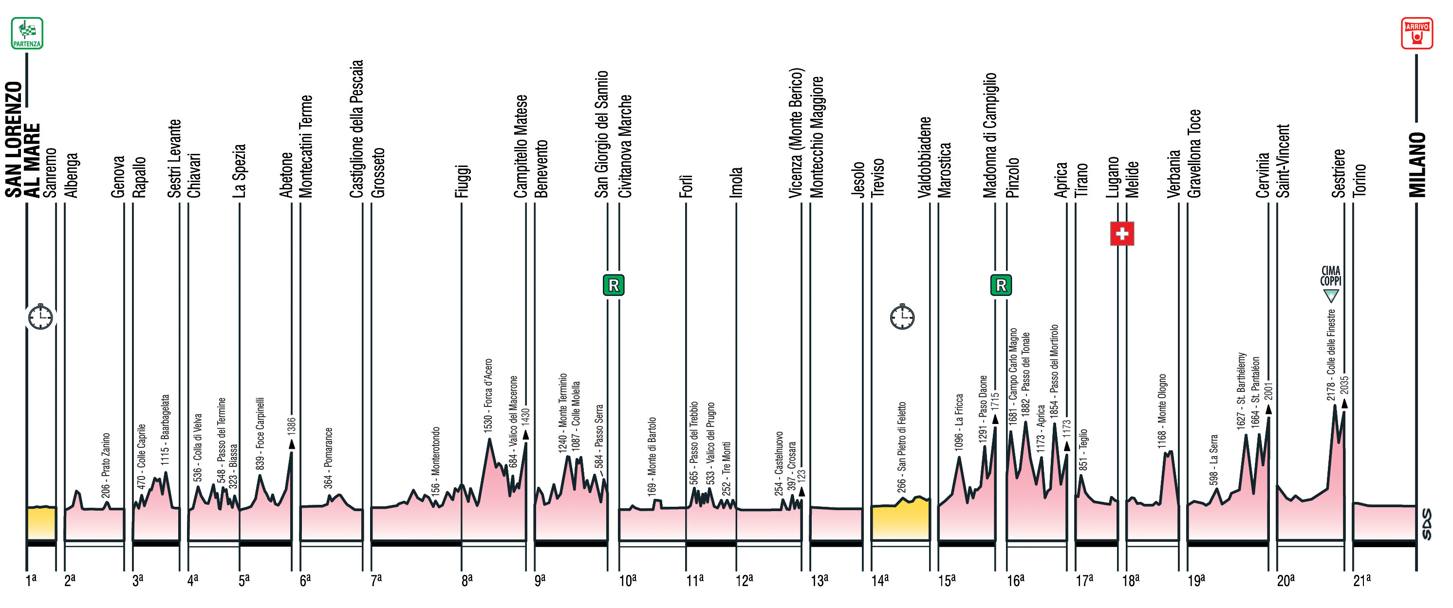
Now on to each stage. Note the annotations where TV = Traguardo Volante or Intermediate Sprint and R = Rifornimento or Feed Zone.
Stage 1 – Saturday 9 May
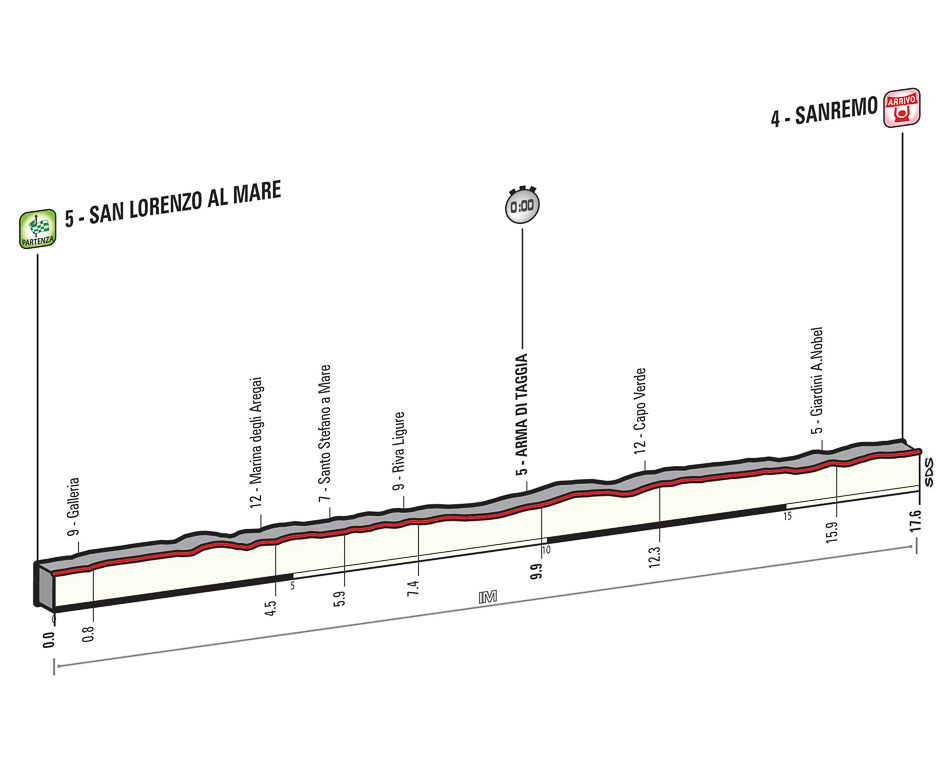
A team time trial to open the race in Sanremo. Famous to outsiders for the Cipressa and Poggio the reality of cycling in Samremo is the coastal cycle path built on an abandoned railway line complete with tunnels. The race starts at the foot of the Poggio but sticks to the coast for a flat route. This is a strange, novel course, the path is wide enough for teams and following cars but only just. It’s not technical but a touch of wheels won’t mean skidding along the ground, it could mean smashing into a rocky wall. At 17.6km some riders on weaker teams can expect to lose a minute if they saunter along the path.
Stage 2 – Sunday 10 May
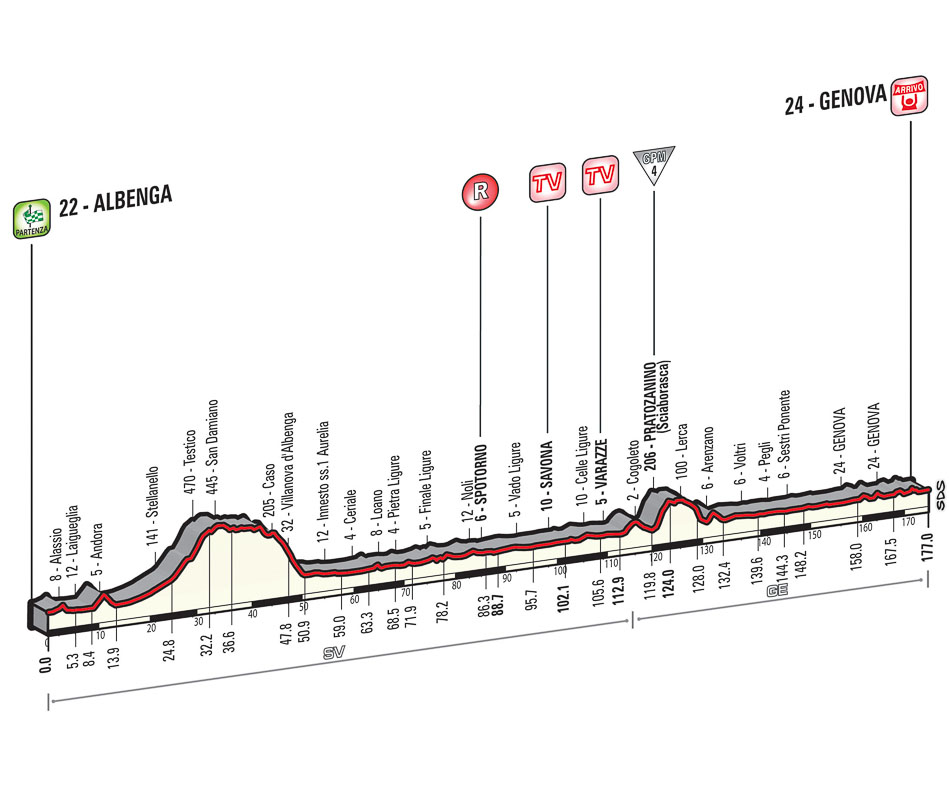
One for the sprinters with a small climb thrown in just so they can award the mountains jersey to someone. The finish circles the port city of Genoa several times, the city is worth a visit.
Stage 3 – Monday 11 May
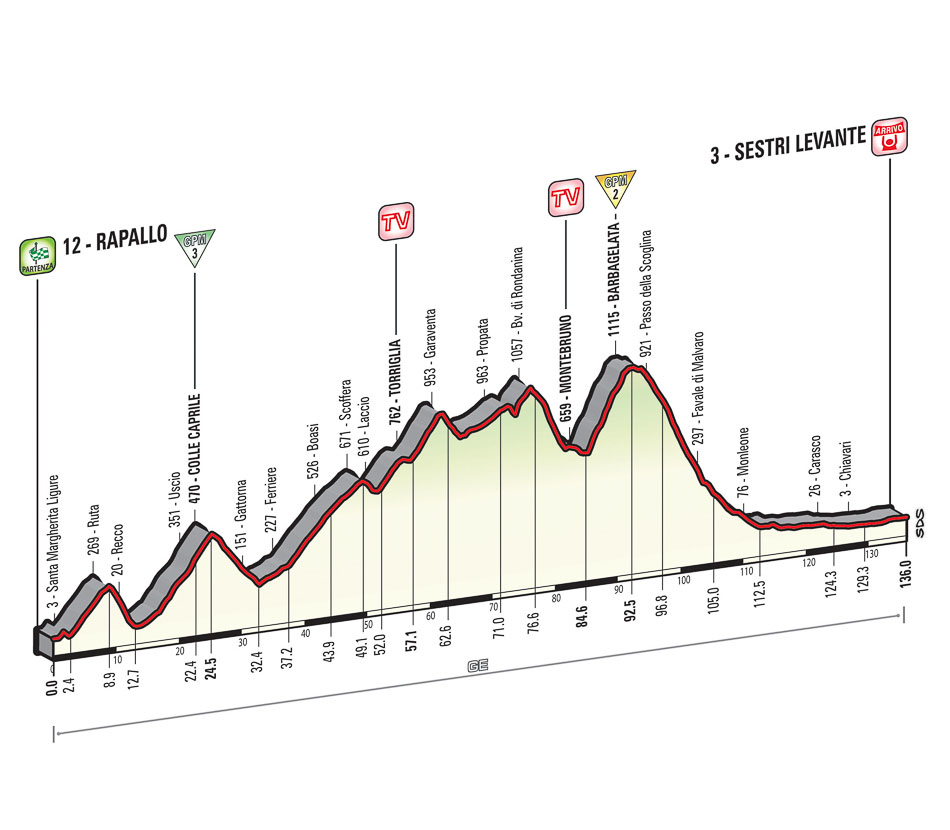
It’s only Stage 3 but look at the climbing: welcome to the Giro. The short 136km route heads into Liguria but sticks to some gentle climbs, the early Colle Caprile is 5% and the climb of Barbagelata (“frozen beard”) is harder at 5.5km and over 7%. It’s a chance to put the sprinters in trouble but they’ve got time to get back, only those in bad shape will suffer.
Stage 4 – Tuesday 12 May
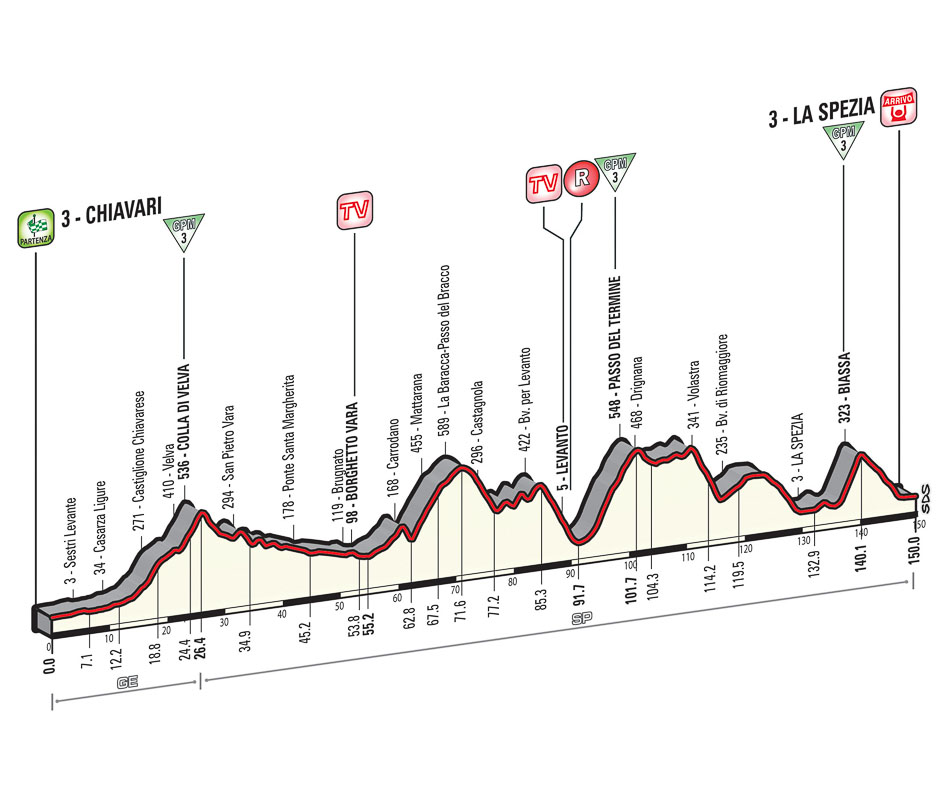
A scenic route across the Ligurian hills and through the Cinque Terre park. If the sun is shining then be warned as you’ll feel the urge to visit and ride these stunning and rewarding roads. The Passo del Termine is a steady climb at 6-7%. The best is saved for last, the race rides into the naval port of La Spezia and then ascends to Biassa, a tricky climb of 3.5km at over 8% on a winding road that looks like a twisting piece of spaghetti. This is the home of Alessandro Petacchi but most of the sprinters can forget about this, the late climb will eject most.
Stage 5 – Wednesday 13 May
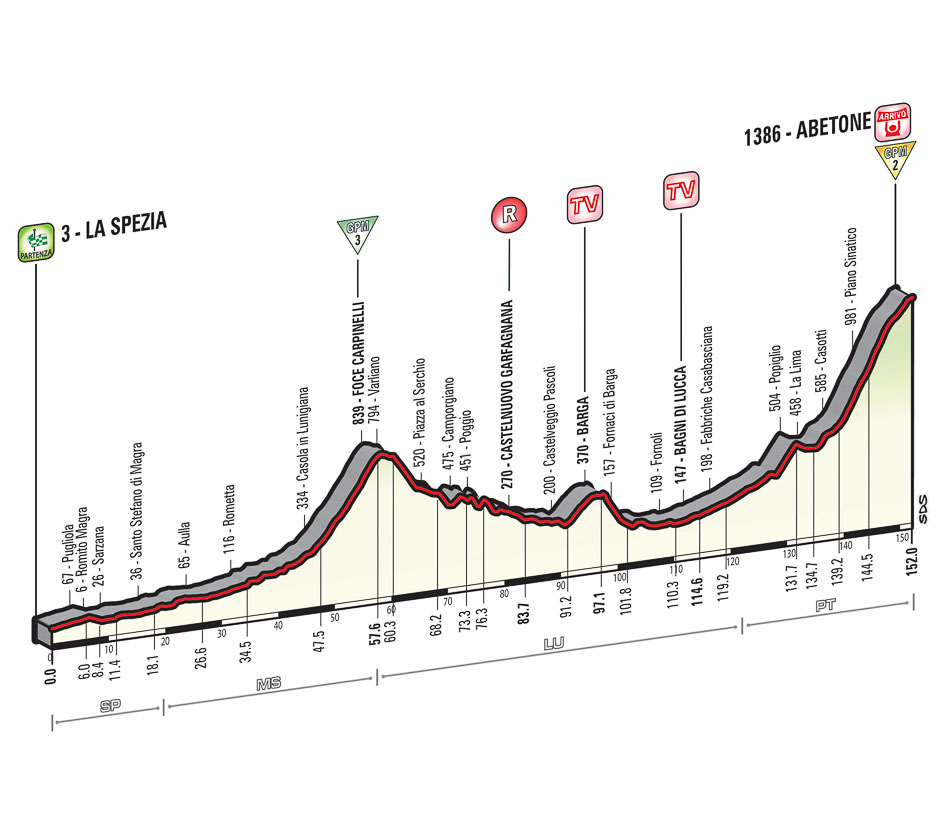
Stage 5 and a summit finish already. It’s all about the final climb up Monte Gomito to Abetone, a long drag to test the power and one of those climbs where the pace is high and sitting on a good wheel matters. This climb is legendary to Italian cycling as Fausto Coppi took flight to win his first Giro – there’s a small memorial to him by the road – and Merckx and Gaul have also used the road as a springboard to glory. But in today’s world of light bikes, aero wheels, skinsuits and smooth roads this probably won’t be too selective. Watch to see if any big names are struggling and expect a powerful puncheur to win.
Stage 6 – Thursday 14 May
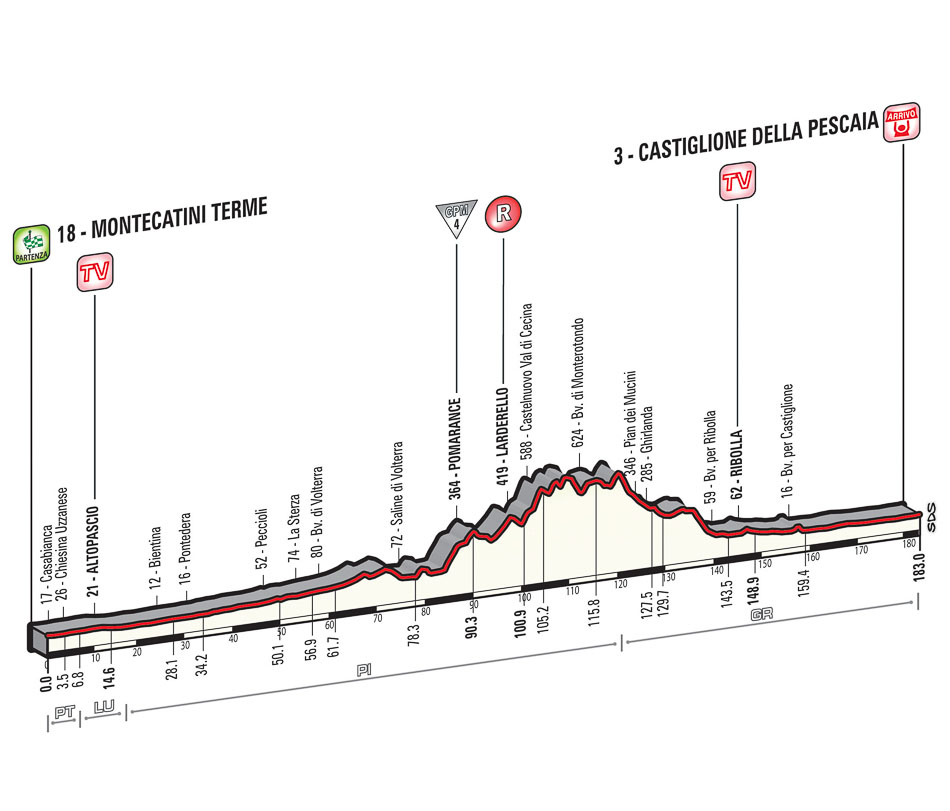
Ah Montecatini Terme, the swanky spa town almost famous for its waffles and training camps! It’s also where Mario Cipollini beat Alberto Binda’s record of stage wins in the Giro but here it’s the start and not the finish for a change. A day for the sprinters and also the locals as the race crosses Toscana – Tuscany to anglophones – and one of the hotbeds of Italian cycling.
Stage 7 – Friday 15 May
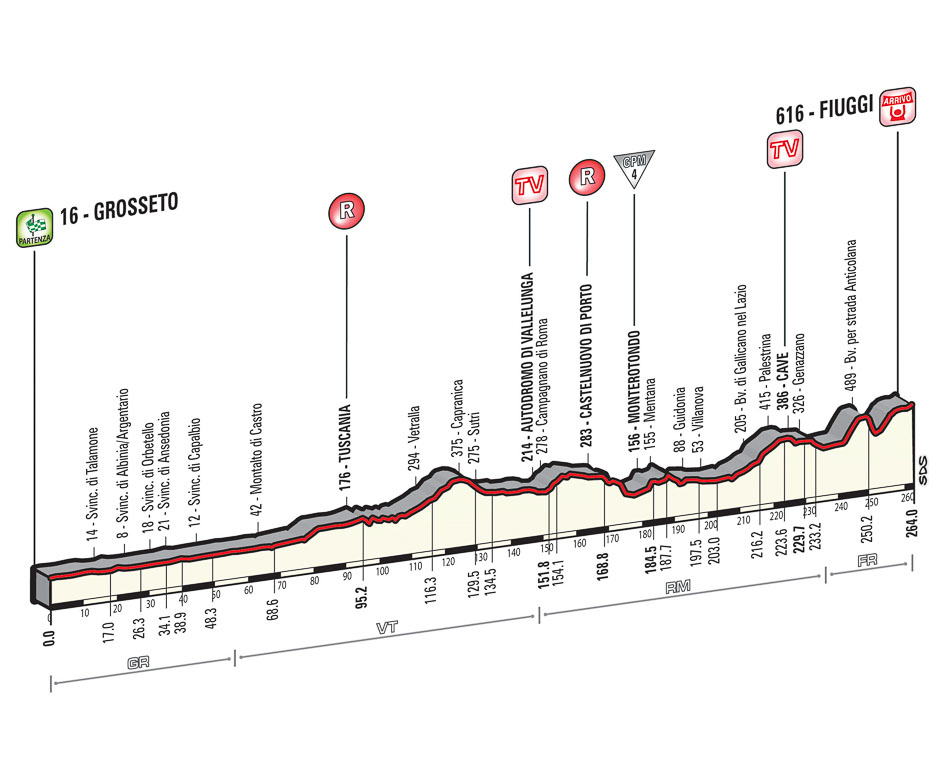
264km! A giant day as the race speeds south past Rome to Fiuggi, the spa town famous for its bottled water. The route has something of Milan-Sanremo to it with the length and the increasing difficulty to the end. A sprint? Probably but expect a few of the flatlanders to be fatigued.
Stage 8 – Saturday 16 May
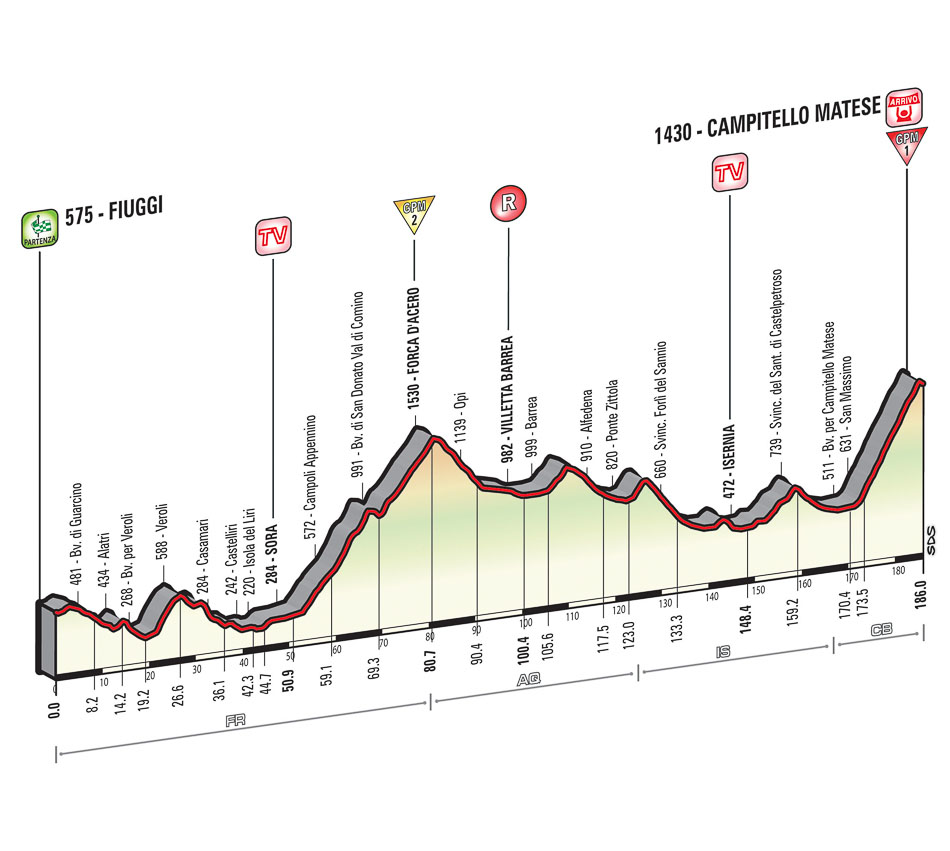
The first “reveal” of the 2015 Giro. The Forca d’Acero is getting on for 30km at 4%, a real energy sapper. The final climb has a 10km section at 7% before a slight dip to the finish line. This is selective and we should see all the big names come to the fore. Campitello Matese isn’t a regular finish but has featured over the years with wins from the likes of Gilberto Simoni and Bernard Hinault, both blessed with mule-like stubbornness. Whoever takes the maglia rosa here can hope to hold it for a week.
Stage 9 – Sunday 17 May
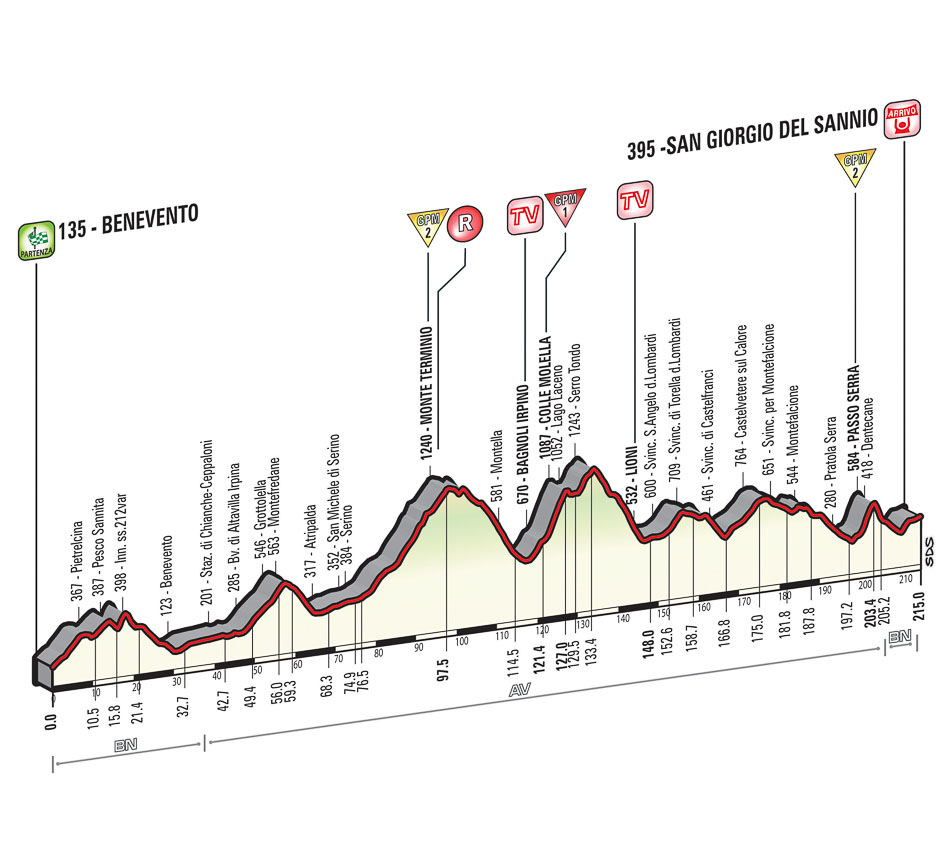
After the previous day’s GC shakedown this mountain stage across the Appenines offers others the chance of a stage win via a breakaway. But watch out in case the weather is bad as this is a lumpy route on rough roads and it could be a hard stage to control if a big group barges away.
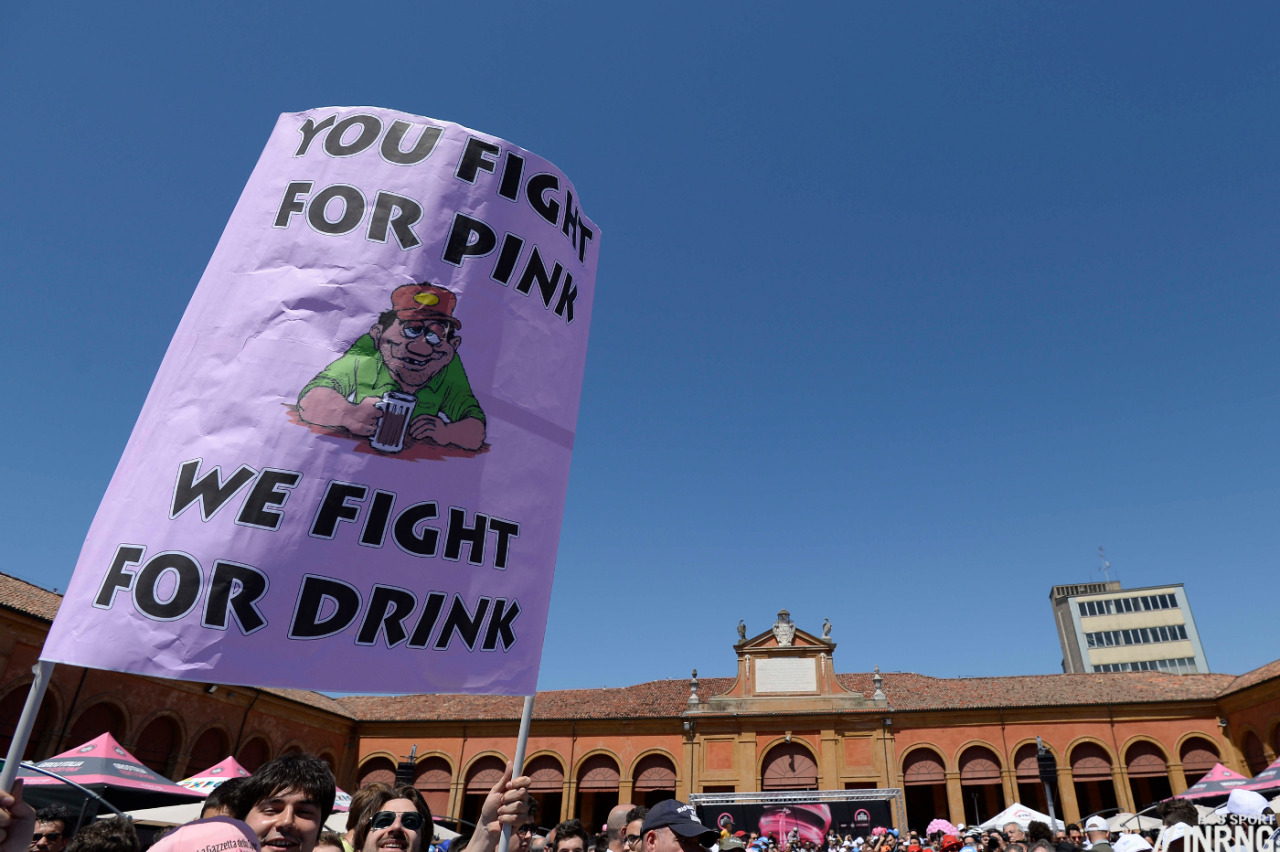
Stage 10 – Tuesday 19 May
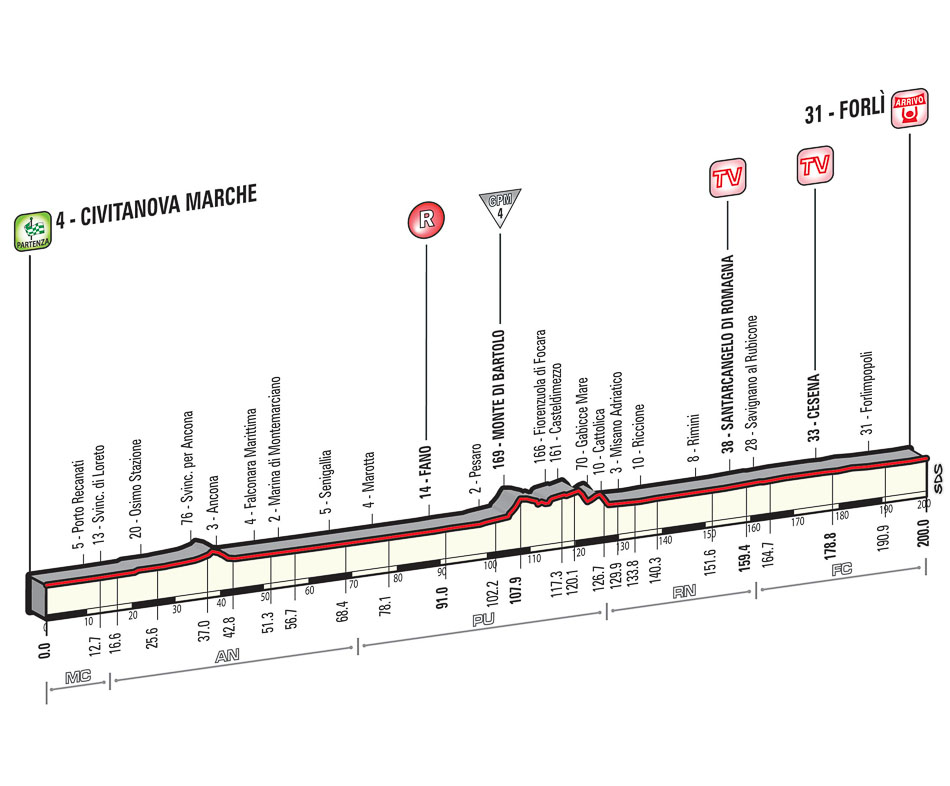
After the rest day this is almost another recovery day. 200km but for many a chance to sit tight on the wheels and save watts. If the stage isn’t too remarkable remember the town of Forlì because its the birthplace Tullo Morgagni who helped to launch the Giro di Lombardia, Milan-Sanremo and the Giro d’Italia during his reign as editor of La Gazzetta Dello Sport. It’s also the home of Ercole Baldini, “the train of Forlì”, Hour Record holder, Olympic race winner and Giro champion.
Stage 11 – Wednesday 20 May
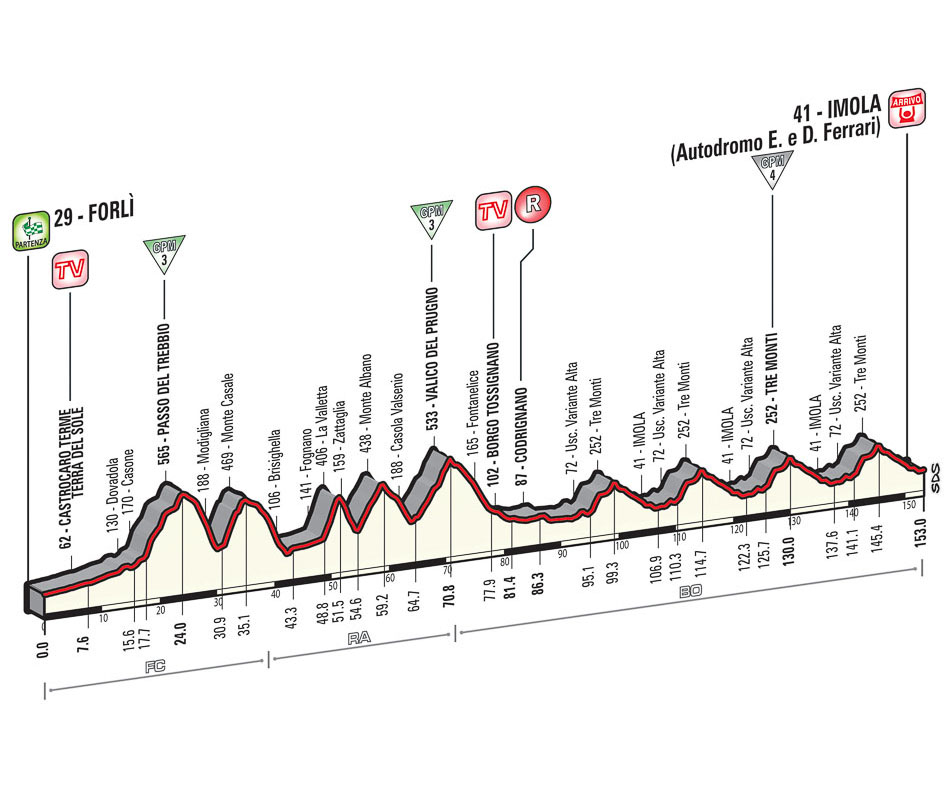
The race bends north for a stage across some of the late Marco Pantani’s training routes in Romangna before lapping the Tre Monti circuit used by the 1968 World Championships and the 2009 Italian Championships before the finish in the Ferrari track… the prancing horse and not the chancing quack. A sprint perhaps but from a small group.
Stage 12 – Thursday 21 May

The race rides to Vicenza, home of Campagnolo, but there’s almost no need to change gear for half the stage. The finish is spiced up with the uphill finish outside the Church of St Mary on Monte Berico, a large wide road for 2km that’s 7% but reaches 10% for the moments to the line.
Stage 13 – Friday 22 May
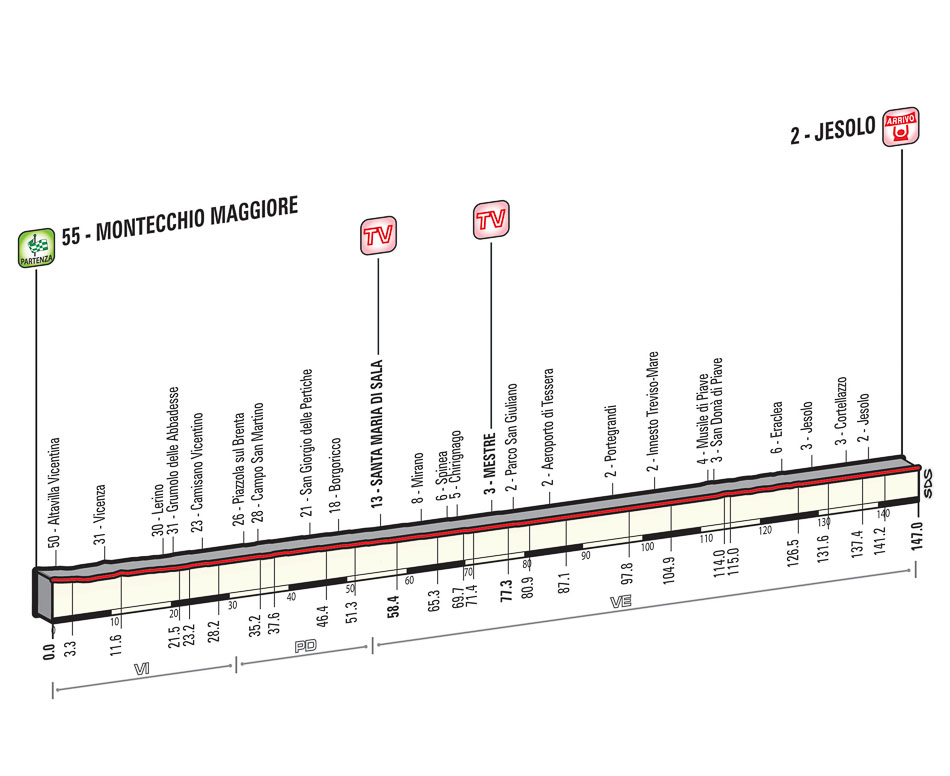
If a picture says a thousand words the profile above says everything: a day for the sprinters as the race heads to the seaside resort of Jesolo.
Stage 14 – Saturday 23 May
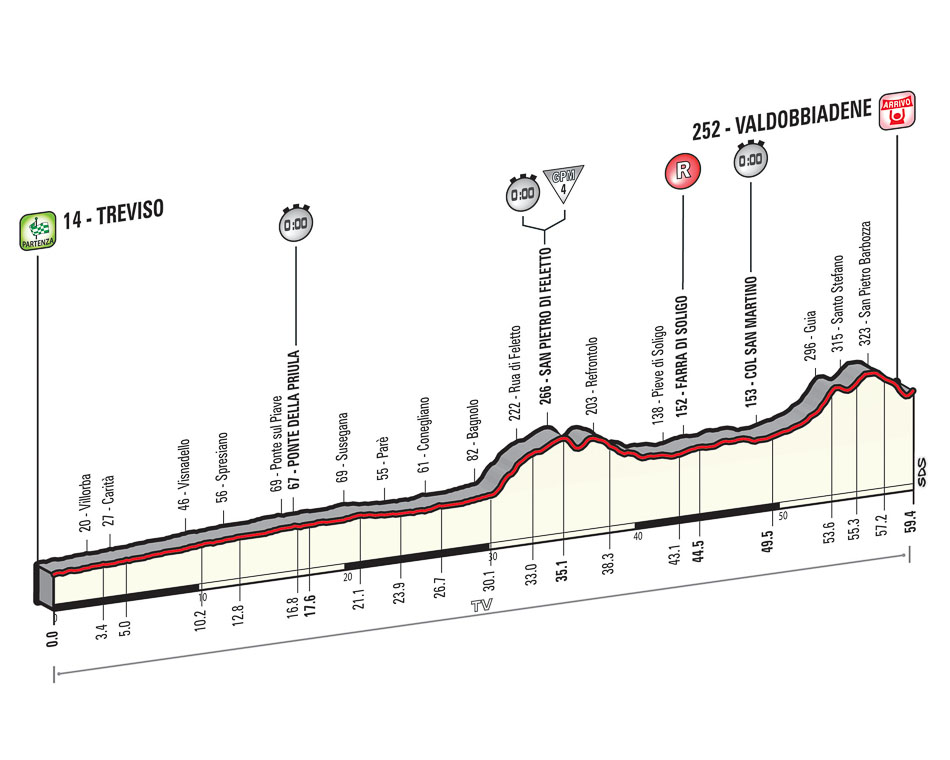
It’s a shame there’s a time trial here because many would enjoy going slow given the abundant vineyards and their Prosecco produce. But who will sparkle? At 59.4km this a very long time trial and the time gaps can be huge. Don’t ignore the first 30km on the flat because a rider must push a huge gear here but cannot afford to blunt their legs before heading into the hills. The 4th cat. climb is 5% which let riders stay in their aero tuck for much of the way. The latter climbs include the 12% slope to Santo Stefano. This isn’t a technical course with traps and tricky corners but the length and the awkward slopes towards the finish will be ruinous for some.
Stage 15 – Sunday 24 May
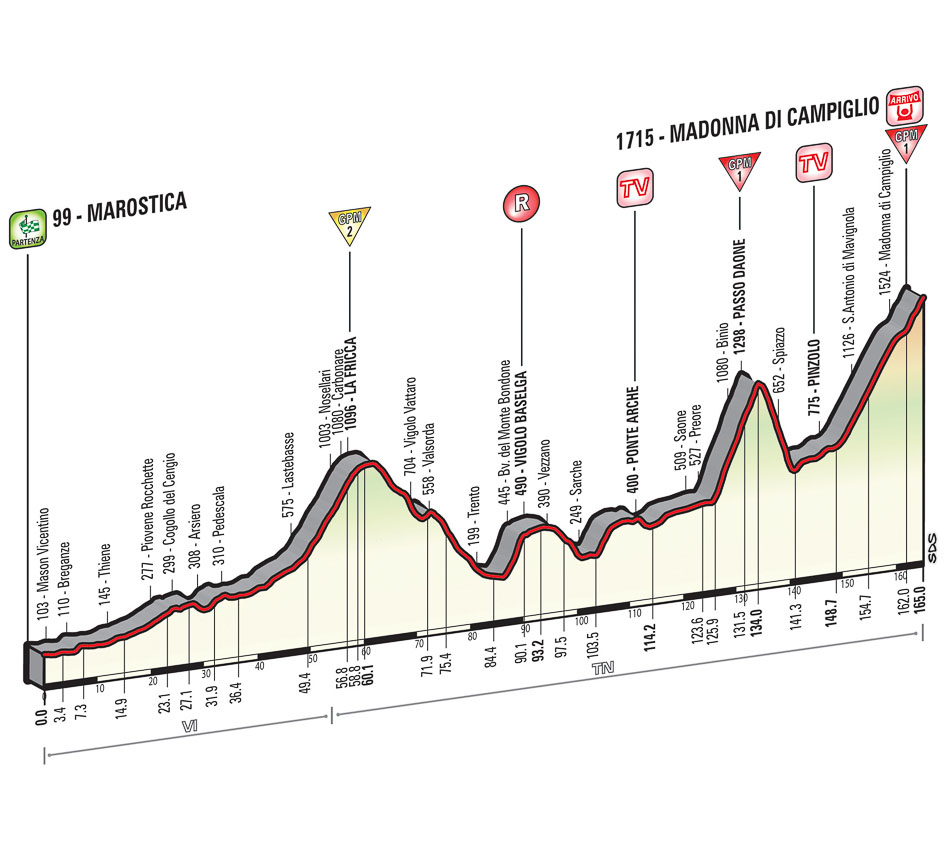
There’s no rest for the GC riders. After the previous day mashing the big chainring now it’s time for the climbing gears. The Passo Daone is an exciting climb with 9% for 8km but sustained middle section above 12%. It’s hard to see anyone going for glory on this but it will reject many via the back door. Madonna di Campiglio is a big ski resort, infamous in cycling as the exit point for Marco Pantani and, if we had to trace it all back to one point, the moment the climber’s life started its tragic descent. As for the race this is a steady climb at 6% for most of the way, a summit finish but not too dramatic.

Stage 16 – Tuesday 26 May

Who had a bad rest day? The stage starts uphill and the attacks will fly as chancers try to get in an early move. The Passo del Tonale is hard and will take its toll. The road rises to Corteno Golgi via some nasty 15% sections before the race crosses the finish line in Aprica to taunt heavy riders who might fancy stopping at their hotel. The Passo del Mortirolo rates as one of the hardest climbs in Italy with regular 12% slopes with added ramps at 18%. A difficult descent and then Corteno Golgi again with the 15% slopes before the road eases in Aprica. Will someone gamble and attack on the Mortirolo? Climbers who lost minutes in the time trial will have to go for it.
Stage 17 – Wednesday 27 May
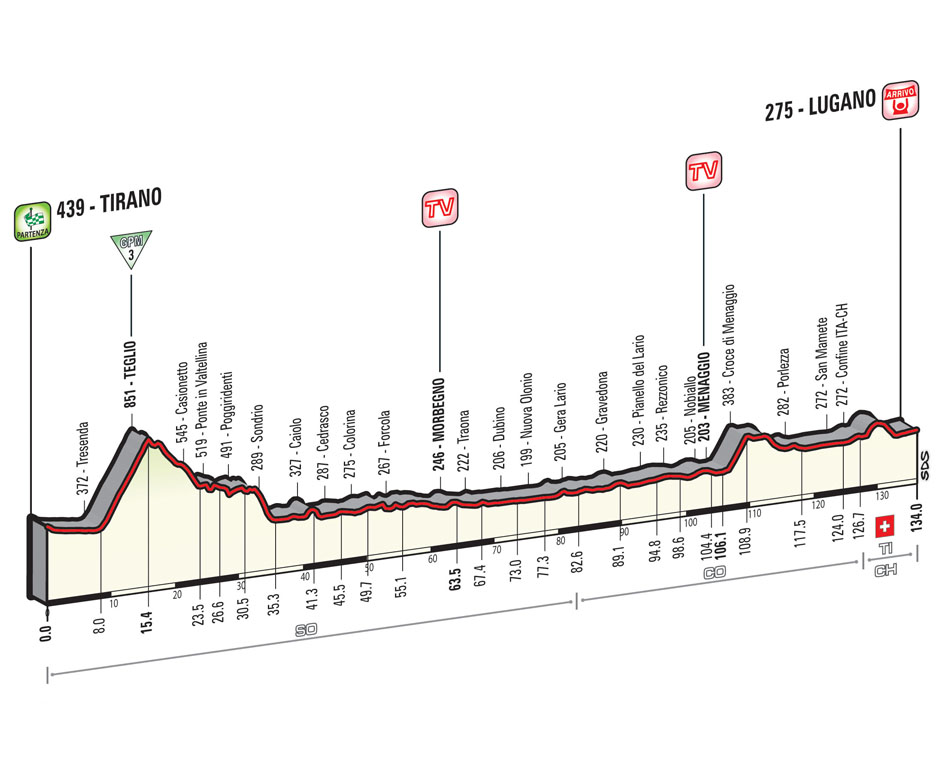
Almost a rest day this stage pedals along the upper Adda valley and allows some to pedal into Switzerland and check their bank balances because Lugano is a popular expatriate base for cyclists, home to Alberto Contador, Vincenzo Nibali, Fabio Aru and more. A chance for the sprinters this stage is partly designed to make them stay in the race.
Stage 18 – Thursday 28 May
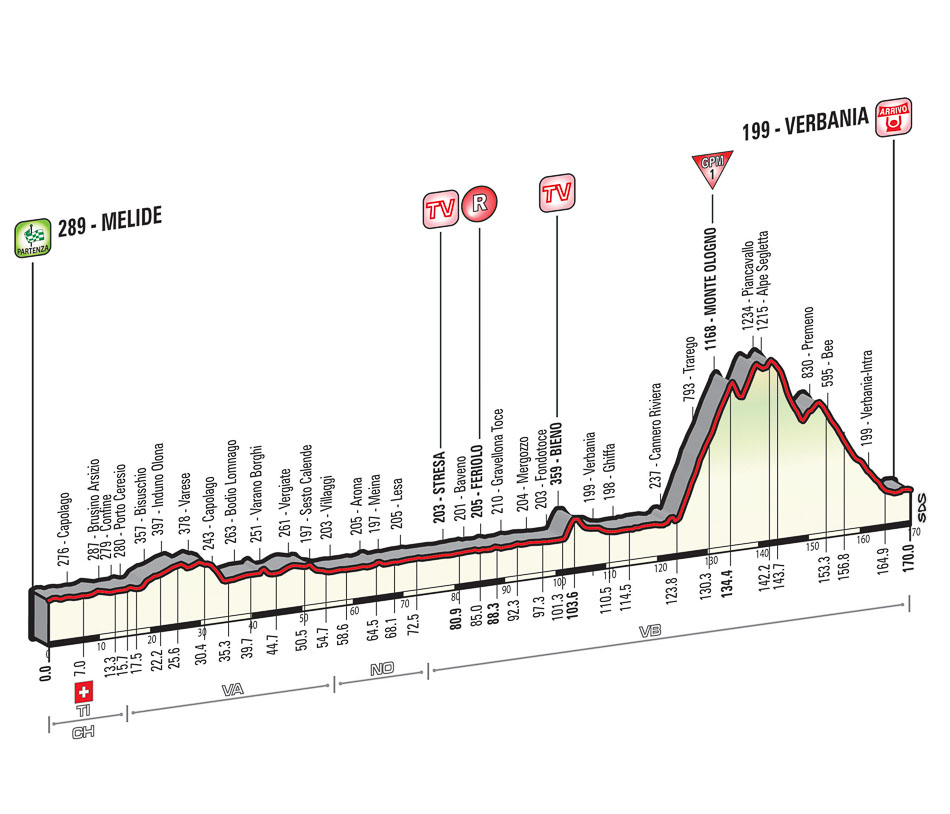
Probably a day for a breakaway, the fugitives will look to build up an advantage as the circle Lake Maggiore on flat roads. Monte Ologno is one of those climbs that groans with cicloamatori on a Saturday morning from March to October and a good test for anyone with its 9-10% slopes. The descent is longer than the climb but still fast and technical. This isn’t a set-piece stage for the GC but some entrepreneurial types could attack over Monte Ologno and once they get 30 seconds it’ll be hard to pull them back.
Stage 19 – Friday 29 May
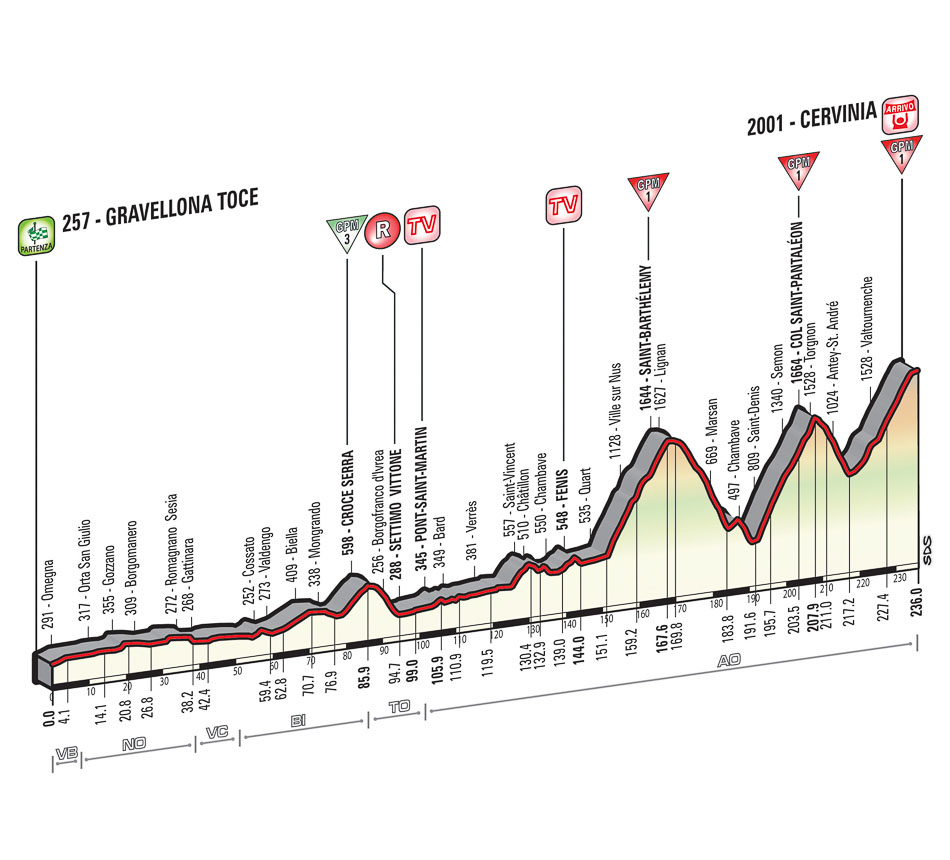
Late in the third week and here comes a 236km stage in the mountains. The race heads for the Aosta valley and its French names and French-style climbs with more regular gradients of 6-7%. Cervinia – Matterhorn for foreigners – is where Ryder Hesjedal went into TT mode to construct the foundation of his 2012 Giro win. The gradients might not be so savage but the distance will crack some.
Stage 20 – Saturday 30 May

The last day to win the Giro and what a course. The race circles the industrial city of Turin before heading up the ominous Susa valley for the Colle delle Finestre. See the light grey tone on the graphic above? It marks the unpaved gravel section of the climb. It’s 9% most of the way meaning every man for themselves and if anyone loses time by the summit they’ll struggle to get back on. A sharp descent and then the drag to Sestriere at 5% where the best rider of the Giro can show what they’ve got.
Stage 21 – Sunday 31 May

Basta! The final day is a parade between two of Italy’s northern cities before a certain sprint.


Do you know if this is being shown on ITV?
Nope. You can get Eurosport online for £4 a month (or various streams). Great thing about Eurosport is that you don’t have to listen to Liggett and Sherwen.
So useful. Thanks.
Clearly a route the GC contenders can come in slightly under form and build up to top form by the TT. I imagine the climbing day after the TT will find some racer out.
I think that’s the plan but especially in the Giro there are always events that change things.
A big THANK YOU to Ninox and Prendas!! This is a great site and they have helped Inner Ring to keep it that way. Thank you both!!
And yes, the advertising works. I have bought from both of your companies specifically because you have been here.
Thanks! I know not everyone wants or needs to buy from the ads but it’s always appreciated when someone says thanks.
While others say GRAZIE while waiting for the scheme to put some loot directly into the cyber-pocket of Mr. Inrng for his fine work here. La Corsa Rosa’s always my favorite race though this year I might only get down to Fiuggi to see the race live, in-person from here in Rome.
Fantastic effort yet again, inrng! Thanks for the preview, it’s going to be a tasty one…and one you definitely don’t want to go into too hot as it’s so back-loaded. It’ll be interesting to see if Sky can manage the mega-peak for Porte 2015 as they did for Froome 2013 and Wiggo 2012.
There will be daily previews for each stage too.
Great preview, cheers.
I’m going to pick stage 9 for the big Adam Hansen breakaway attempt.
I was going to say 11, but that would be too obvious!
In Italian (and because we are referring to the Giro) some words sound better and since they are missing from your lexicon, I’d like to chip in:
Stage 1: cronosquadre (Team time trial)
Stage13: completamente piatto (completely flat)
Stage14: cronometro individuale molto lunga (very long Individual time trial)
Stage16: durissima tappa (very hard stage)
Many thanks Inrng for the useful and entertaining preview. Loved “prancing horse” and “sparkle.”
My prediction record has been pretty shabby through the classics, but I will go ahead and take a stab anyway:
R. Porte will be in the maglia rosa but suffer un jour sans. El Pistolero will win the Giro.
And probably Le Tour as well.
Careful if you enter this low on form, because there’s plenty of tricky terrain before the so “creative-writing-course-like” two-thirds twist, through the TT.
I’d pay special attention to double-digit not-so-short stretches, like Crosara, in the Vicenza stage: nearly 4kms averaging 9%, but, crucially, its central section is two whole kms *averaging* 12,7%. Way harder than your average Ardennes’ côte. Only 8 out of the 27 kms from the top to the finish line are flat, and careful with the especially dangerous Perarolo descent. Note that the following day GC men can recover in a totally flat stage…
If I were an in-form GC man, I’d try to see if someone else is having a “not so great” day in the finale of the San Giorgio stage, too, whether a breakaway is out there or not. The Passo Serra isn’t as hard as Crosara, but it’s 3,6km at about 8% with a couple of double-digit sectors. Summit is 10kms away from the finish, only the last three are really flat. Teams will be quite worn out after more than 200kms (and some 650 considering the two previous stages!), besides some 2800 mts of total altitude gain – that is, before the Serra climb (the stage total is about 3200m…). A Tropea style Contador, maybe, could check it out.
It’s a pity that two very interesting stages like La Spezia and Verbania are followed by harder, more important stages, because they’re very promising, too. In La Spezia it’s not just about the whole last little climb, as much as its last 1500-2000 mts, which can really hurt (constant double digit) after a quite “unnerving” short and “wavy” stage. Riders will still have good energies in store, anyway. Monte Ologno, in the Verbania stage, is hard but I think that the following 20 kms may be even more decisive. It’s possible that the team will be pretty worn out, considering will be well into the last week, and if selection is made on the climb, a direct confrontation between captains in a very complicated terrain could provide some surprise. All the same, with the couple of days that follow, I’m not so sure many will be enough brave to go for it.
The Imola stage is a very intriguing classic Appenino stage, the 1700 mts of altitude gain you must face concentrated just in those 55kms between -138km and -83km to the finish line, mostly on roads where a single car can barely pass, could prove themselves devastating. The hilly but not so hellish final circuit should grant that any rider with a strong enough team will, if he should got distanced, reduce damages.
Obviously, it’s all up to riders and their DSs. Last Giro had a couple of very promising Appennino stages, too, but they were raced way under expectations, even if they were eventually pleasant enough.
That said, this year’s route has been designed really well, IMHO, and it’s a pity that the starting list won’t be as stellar as such an interesting proposal would have deserved.
A good number of tricky stages open to creative interpretation; a couple of stages for the sprinters in the last week, too; serious mountain stages with a decent 😉 200+ kms length; a technically challenging and GC-impacting ITT; a probably very entertaining first week; very different types of climbs; multiple climbs featuring in the finale of the stages to allow (at least, they’re allowed to by the course, whether they’ll try…) brave riders to make their move before the hilltop finish, or to create some strategic play with gregari sent up the road beforehand; descent finishes; crucially, the always interesting combination with hard climb / softer climb in the finale; and I wouldn’t ever underestimate the importance of fewer and shorter transfers (at least in “artistic” terms, like a kind of “obstruction” when creating the course, as in Von Trier – or Oulipo’s – aesthetics).
It looks like as if Vegni and his team had listened to most of the requests expressed by “élite” fans (to distinguish the category from those more prone to “please more 25% hilltop finishes, 100kms adrenalinic stages and 8000 mts of altitude gain”) in their wishlists… much appreciated. Hence, I guess the race will be a complete bore! 😛
It’s a record! Gabriele’s longest post ever.
But a good post (and if I don’t like the length I don’t have to read) – interesting reading and I might have to refer back to it day-by-day as we come to each stage.
The first line of the post could be referred to the post itself, indeed 🙂
(“Careful if you enter this low on form…”).
PS Sorry for the many typos, I wrote it in a hurry.
I’d agree with all of that, on paper the route looks exciting offering plenty even if it doesn’t have all the wild “Zomegnan” stages day after day. But the Mortirolo, Finestre provide plenty and the first week does have some big mountains, it’s not the stereotypical Tour de France opening week for sprinters and puncheurs.
Thanks for sharing local knowledge! Contributions like these are another reason Inrng is one of the best. I’d like to think the St. Pantaleon climb (which we do as part of our Grandi Alpi tour itinerary) will have some effect but not much has happened there on previous visits. I’ll sure miss not riding up Colle Finestre on the penultimate day. Perhaps I’ll fall victim to the temptation, rent a car here in Rome, throw a bike in the back and drive all the way up there? 🙂
Scrolling through this wonderful preview – thank you INRNG – I can’t see past Contador.
There are stages like 15,16,18 and 2o where there’s an uber climb and then that little bit extra. The kind of terrain where he has the ability to bury anyone, either because he needs to, or just because he can.
I really do hope for a proper contest, but as Seeing Elvis says above, I anticipate a jour sans for Porte at some point, and that will be that.
Of course, anything can happen…
Surely that should be ‘un giorno senza’?
“Una giornata no” 😉
Yes, of course, please forgive the limited nomenclature.
“I never claim profanity- it just rolls right off my tongue. ” -Lowell George
Anything can happen indeed, and that certainly contributes to making it so compelling.
Looking past the obvious shadows of this sport, there is beauty and etiquette and tradition and- hopefully- a future.
I’m lucky enough to be in Italy with my family for stages 14, 15, 16 and the start of 17. We will be staying for most of it in Grosio, which is where the route turns onto the Mortirolo. We are are racers or past racers all and plan on riding the Stelvio on the rest day, and then riding up the Mortirolo to watch the race the next day. First time at the Giro, and I’m not sure I would have preferred any consecutive three stages over 14, 15, & 16.. The long TT followed by two the two climbing days could be defining.
Any suggestions on following the race from some of you old hands at the grand tours?
Try to mix things up a bit, it’ll depend on the weather but aim to be roadside for one stage, the TT is good because you get to see everyone one by one but you could also pick an intermediate checkpoint with a giant screen TV to watch things. For another try visiting the start or finish so you can see what it’s all about.
Some more thoughts from a piece in 2013 that I’ll probably rework and update with more ideas this year: http://inrng.com/2013/05/watching-a-grand-tour/
I’m not sure if I’d label a certain waffle aficionado a “quack”. “Brilliant and utterly lacking a moral compass” might be more apt.
Sure but let’s not dwell on him.
Seems to be quite a few stages that would suit puncheurs and sprinters who can climb a bit. The only out and out flat stages being a fair way into the race it’s no surprise Cavendish and Kittel have decided to dodge this one! I wonder if they’d have set it out like that if Cipo and Petacchi were still in their pomp?! Looking forward to it.
I agree: parcours are far more interesting with a wide variety of stages. Crucially, stages for puncheurs are almost always more exciting than flat stages. ASO could learn a thing or two for the Tour and Vuelta.
Does anyone know what the GE SP LU PT captions on the profiles mean?
They’re the different provinces the race passes through. So for the final stage TO is Torino, VE for Vercello, NO for Novara and then MI for Milan etc.
Don’t see it any different with any organizer awarding a wild card and insisting a team brings a certain rider rather than not bring. Like ASO and Europecar if they had insisted they bring Volkler when they were a wild card. I’m sure no one would have thought twice about that insistence.